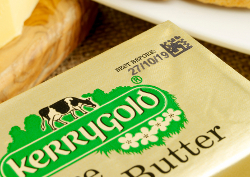How item-level coding is empowering consumers and benefiting food producers and retailers.

Recently I came across a news item on Barcoo, an application that turns a smartphone into a bar code scanner. According to the company’s website, Barcoo tells the consumer everything they need to know about the scanned product - “price comparison, test reports, health, green and sustainability information” - and will “save money, take care of your health and our environment.”
To get some idea of the size of the market, I searched “barcode scanners for smartphones”. There were 1,920,000 results.
Taken together, this news item and this remarkable figure highlight a sea change in coding and marking over the last decade. In that time the technology has evolved from regulatory device (printing the “sell by” date on foodstuffs, for example), to supply chain essential (helping retailers keep the shelves stocked), to its new role as the consumers’ window onto the history of whatever product they happen to be holding in their hand. Coding no longer belongs only to manufacturers and their supply chains; everyone, it seems, has an opinion on the subject.
In truth, it isn’t the coding per se that has grabbed public attention, but the traceability that it provides. Periodic food safety “scares” have contributed to its raised profile; in particular, a 2008 recall in the U.S. highlighted inadequacies in food traceability. In June that year outbreaks of salmonella in New Mexico and Texas were initially blamed on certain types of raw tomato.
At one point in the crisis, the U.S. Director of Food Safety admitted “we may not ultimately know where these [tomatoes] came from.” The comment was more alarming in hindsight: a month later, the outbreak was traced to jalapeno peppers!
Small wonder that in the same month an AP-Ipsos poll found 86% of Americans supporting produce labeling that enables “traceback”, or that in January this year President Obama signed into law the Food Safety Modernisation Act (FSMA), the most significant update of U.S. food safety law in decades.
Protecting the innocent
The events of 2008 had many innocent victims besides those who fell ill. Consumers’ loss of confidence in tomatoes and peppers hit growers of both - the former unjustifiably - and confidence can be slow to return: two years after a 2006 recall of spinach, sales were still 10% down.
While traceability mechanisms cannot prevent contamination, they are clearly essential to limiting the fall-out when it happens. Prompt action minimizes loss of customer confidence and prevents a whole category of food producers being wrongly suspected, as the unfortunate tomato growers were in 2008. There are, however, different “flavors” of traceability, each with varying degrees of transparency and capable of carrying different amounts of information. For example, a widely-used system is the “one up, one back” case-level solution. Every case is allocated a GS1-standard 14-digit GTIN and lot code, which each trading partner in the supply chain records when they receive the case (“one back”) and when they send it onward (“one down”). If contamination occurs, going back through the databases will identify the source, and reversing the process facilitates a recall.
Repackaging complexities
Traceability becomes more complex where cases of produce are often broken up, and individual items repackaged with items from other cases. The solution here is to add another layer of traceability, this time at item level, such that each pack carries a unique identifier. Consumers already want this, and the pressure will only increase as their expectations of digital supply chains get ever higher; after all, we are all used to being able to discover almost everything about a product or service or company before buying something.
Although it cannot prevent contamination, item-level coding can prevent things that are important to politically- and environmentally-aware consumers, such as buying produce from a country whose regime they disapprove of, or that has been produced in an environmentally-unfriendly fashion.

Challenge that can't be ducked
There’s no denying that implementing coding at the item level is a challenge for the coding industry, but it’s one that we cannot duck and, thankfully, one which we are confronting.
As an example, consider the HarvestMark food traceability solution developed by U.S. company YottaMark Inc. HarvestMark, the company claims catchily, “puts the farmer in the kitchen by making it possible for each and every food item to tell its story anytime, anywhere.” It’s a simple, elegant concept: when a product is harvested, its data is recorded and linked to a unique code supplied to the grower by HarvestMark over the Internet. This is then printed as a 2-D bar code label that is applied to the product.
The label accompanies it from farm to retailer, where scanning it with smartphones (or entering the code on the HarvestMark.com website) enables customers to learn about farm locations, grower profiles, food safety notices, nutrition and regional information. To date, more than 200 companies are using HarvestMark and more than 2 billion items have been coded.
If you question just how comfortable consumers are with the smartphone-as-scanner idea, research by Deloitte in 2008 found that 56% of people wanted to be able to trace the origin and production date of food in this way.
Since then consumers have become familiar with the Quick Response (QR) codes appearing on advertisements and which, when scanned with a smartphone, take the user to a website with more information about the product.
I know of a number of companies exploring the potential of QR codes in traceability applications, including one - at the Abukuma farm in Japan - where scanning the code on a box of eggs takes the customer to a webcam showing the chickens that laid the egg!
The smartphone will also be the scanner of choice for the Chinese government’s massive coding project to combat the country’s rampant counterfeiting problem. The aim of the scheme is to apply a linear barcode to every product sold, so that consumers can instantly verify its authenticity. After a slow start, the initiative is now gaining traction, especially in the cosmetics and pharmaceuticals industries.
Don’t forget the printing
Looking ahead, the combination of consumer pressure and FSMA-style legislation in other countries will inevitably increase the demands for on the coding and marking industry for easy-to-access, accurate item-level traceability. Amid all the excitement about what this makes possible, it’s worth reminding ourselves that how much is achieved will depend to a large degree on being able to print the codes - in the volume needed, to the quality demanded and, very importantly, at the place in the production process that guarantees code integrity. Customer confidence in the HarvestMark scheme, for example, depends on being able to generate and apply the unique code as soon after harvesting as possible.
Fortunately due to the convergence of IT, printing technology and consumers’ thirst for knowledge, this challenge is readily solved and the outlook for traceability is bright. We had better get used to seeing more of our fellow shoppers scanning their tomatoes.
Or should that be their jalapenos?
Lee Metters is Strategic Product Director, Domino Printing Sciences. He has been responsible for strategic product planning for the Domino group since 2007. Prior to taking on his current position, Lee had global responsibility for Domino’s business development and direction in key vertical sectors, focusing primarily on the pharmaceutical, industrial marking and product security areas.

Recent Comments
Custom Boxes
You are right, this is very important before...
You can find many inspiration from Instagram app...
Check out Honista app
Great Article!